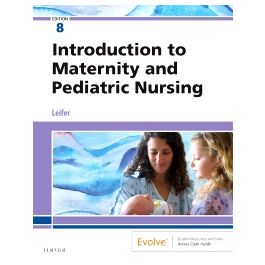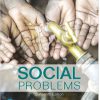Test Bank for Introduction to Maternity and Pediatric Nursing 8th Edition by Leifer
$35.00 Original price was: $35.00.$26.50Current price is: $26.50.
Test Bank for Introduction to Maternity and Pediatric Nursing 8th Edition by Leifer
This is completed downloadable of Test Bank for Introduction to Maternity and Pediatric Nursing 8th Edition by Leifer

Product Details:
- ISBN-10 : 0323483976
- ISBN-13 : 978-0275971281
- Author: Gloria Leifer
Get a solid foundation in maternity and pediatric nursing! Written in a clear, concise, friendly style, Introduction to Maternity and Pediatric Nursing, 8th Edition is the complete guide to caring for maternity and pediatric patients. This best-selling text is organized by developmental stages, discussions of pediatric disorders by body system from simple-to-complex and health-to-illness, and includes a focus on family health. This edition also contains newly updated NCLEX® style review questions, new case studies, new content on zika virus, QSEN and safety, and expanded phases of pregnancy.
Table of Content:
- Unit I: An Overview of Maternity and Pediatric Nursing
- 1: The Past, Present, and Future
- The past
- The present
- The future
- Unit II: Maternal–Newborn Nursing and Women’s Health
- 2: Human Reproductive Anatomy and Physiology
- Puberty
- Reproductive systems
- The human sexual response
- 3: Fetal Development
- Cell division and gametogenesis
- Fertilization
- Development
- Accessory structures of pregnancy
- Fetal circulation
- Impaired prenatal development and subsequent illness
- Multifetal pregnancy
- 4: Prenatal Care and Adaptations to Pregnancy
- Goals of prenatal care
- Preconception care
- Prenatal visits
- Definition of terms
- Determining the estimated date of delivery
- Diagnosis of pregnancy
- Physiological changes in pregnancy
- Nutrition for pregnancy and lactation
- Exercise during pregnancy
- Smoking during pregnancy
- Travel during pregnancy
- Common discomforts in pregnancy
- Psychosocial adaptation to pregnancy
- Prenatal education
- Effect of pregnancy and lactation on medication metabolism
- Immunizations during pregnancy
- Nursing care during pregnancy
- 5: Nursing Care of Women With Complications During Pregnancy
- Assessment of fetal health
- Pregnancy-related complications
- Pregnancy complicated by medical conditions
- Environmental hazards during pregnancy
- Effects of a high-risk pregnancy on the family
- 6: Nursing Care of Mother and Infant During Labor and Birth
- Cultural influence on birth practices
- Settings for childbirth
- Components of the birth process
- Normal childbirth
- Admission to the hospital or birth center
- Nursing care of the woman in false labor
- Nursing care before birth
- Stages and phases of labor
- Vaginal birth after cesarean
- Nursing care during birth
- Nursing care immediately after birth
- Cord blood banking
- Microbiomes and nursing care during labor and delivery
- 7: Nursing Management of Pain During Labor and Birth
- Education for childbearing
- Childbirth and pain
- 8: Nursing Care of Women With Complications During Labor and Birth
- Obstetric procedures
- Abnormal labor
- Premature rupture of membranes
- Preterm labor
- Prolonged pregnancy
- Emergencies during childbirth
- 9: The Family After Birth
- Adapting nursing care for specific groups and cultures
- Cultural influences on postpartum care
- Postpartum changes in the mother
- Emotional care
- Parenthood
- The family care plan
- 10: Nursing Care of Women with Complications After Birth
- Shock
- Hemorrhage
- Thromboembolic disorders
- Infections
- Mood disorders
- The homeless mother and newborn
- 11: The Nurse’s Role in Women’s Health Care
- Goals of healthy people 2030
- Preventive health care for women
- Menstrual disorders
- The normal vagina
- Gynecological infections
- Family planning
- Menopause
- 12: The Term Newborn
- Adjustment to extrauterine life
- Phase 3: care of the newborn
- 13: Preterm and Postterm Newborns
- The preterm newborn
- The postterm newborn
- Transporting the high-risk newborn
- Discharge of the high-risk (preterm birth) newborn
- 14: The Newborn with a Perinatal Injury or Congenital Malformation
- Malformations present at birth
- Metabolic defects
- Chromosomal abnormalities
- Perinatal injuries
- Infant of a diabetic mother
- Unit III: The Growing Child and Family
- 15: An Overview of Growth, Development, and Nutrition
- Growth and development
- Nutrition
- Play
- Traveling with children
- Ongoing heath supervision
- 16: The Infant
- General characteristics
- Development and care
- Community-based care: a multidisciplinary team
- Illness prevention
- Infant safety
- Summary of major developmental changes in the first year
- 17: The Toddler
- General characteristics
- Guidance and discipline
- Daily care
- Toilet independence
- Nutrition counseling
- Day care
- Injury prevention
- Toys and play
- 18: The Preschool Child
- General characteristics
- Physical, mental, emotional, and social development
- Guidance
- Preschool
- Daily care
- Accident prevention
- Play during health and illness
- Nursing implications of preschool growth and development
- 19: The School-Age Child
- General characteristics
- Physical growth
- Sexual development
- Influences from the wider world
- Play
- Latchkey children
- Physical, mental, emotional, and social development
- Guidance and health supervision
- 20: The Adolescent
- General characteristics
- Growth and development
- Parenting the adolescent
- Health promotion and guidance
- Common problems of adolescence
- The nursing approach to adolescents
- Unit IV: Adapting Care To The Pediatric Patient
- 21: The Child’s Experience of Hospitalization
- Health care delivery settings
- The child’s reaction to hospitalization
- The parents’ reactions to the child’s hospitalization
- The nurse’s role in the child’s hospitalization
- Home care
- 22: Health Care Adaptations for the Child and Family
- Admission to the pediatric unit
- Data collection, observation, and recording
- Physiological responses to medications in infants and children
- Nursing responsibilities in administering medications to infants and children
- Selected procedures and their adaptation to children
- Unit V: The Child Needing Nursing Care
- 23: The Child With a Sensory or Neurological Condition
- The ears
- The eyes
- The nervous system
- 24: The Child with a Musculoskeletal Condition
- Musculoskeletal system
- Musculoskeletal system: differences between the child and the adult
- Observation and assessment of the musculoskeletal system in the growing child
- Pediatric trauma
- Disorders and dysfunction of the musculoskeletal system
- Family violence
- Child abuse
- 25: The Child With a Respiratory Disorder
- The respiratory system
- 26: The Child with a Cardiovascular Disorder
- The cardiovascular system
- 27: The Child With a Condition of the Blood, Blood-Forming Organs, or Lymphatic System
- Hematological system
- Anemias
- Bleeding disorders
- Disorders of white blood cells
- Nursing care of the chronically ill child
- Nursing care of the dying child
- 28: The Child With a Gastrointestinal Condition
- The gastrointestinal tract
- Disorders and dysfunction of the gastrointestinal tract
- 29: The Child With a Genitourinary Condition
- Development of the urinary tract
- Development of the reproductive systems
- Assessment of urinary function
- Impact of urinary or genital surgery on growth and development
- 30: The Child With a Skin Condition
- Skin development and functions
- Skin disorders and variations
- Nursing care of the burned child
- Sunburn
- Sunscreens
- Frostbite
- 31: The Child With a Metabolic Condition
- Integration of the nervous and endocrine systems
- Disorders and dysfunction of the endocrine system
- Endocrine disorders
- 32: Childhood Communicable Diseases, Bioterrorism, Natural Disasters, and the Maternal-Child Patient
- Introduction
- Common childhood communicable diseases
- Review of terms
- Host resistance
- Medical asepsis, standard precautions, and transmission-based precautions
- Rashes
- Worldwide immunization programs
- The future of immunotherapy
- Bioterrorism and the maternal-child patient
- Sexually transmitted infections
- 33: The Child With an Emotional or Behavioral Condition
- The nurse’s role
- Types and settings of treatment
- Childhood Mental Disorders
- Organic Behavioral Disorders
- Environmental or biochemical behavioral disorders
- Minimizing the impact of behavioral disorders in children
- Unit VI: The Changing Health Care Environment
- 34: Complementary and Alternative Therapies in Maternity and Pediatric Nursing
- Complementary and alternative therapies
- Appendix A: Standard Precautions and Transmission-Based Isolation Precautions
- Appendix B: Sequence for Donning and Removing Personal Protective Equipment (PPE)
- Appendix C: The Joint Commission’s List of Dangerous Abbreviations, Acronyms, and Symbols
- Appendix D: Commonly Used Abbreviations in Maternity and Pediatric Nursing
- Appendix E: Common Spanish Phrases Used in Maternity and Pediatric Nursing
- Appendix F: Multilingual Glossary of Symptoms
- Appendix G: Conversion of Pounds and Ounces to Grams for Newborn Weights
- Appendix H: Normal Vital Signs and Temperature Equivalents for Infants and Children
- Appendix I: Pediatric Laboratory Values Reference
- Appendix J: Blood Pressure (BP) Levels for Boys and Girls by Age and Height Percentile
- Master Citations
- Glossary
- Index
People Also Search:
introduction to maternity and pediatric nursing 8th edition by leifer
introduction to maternity and pediatric nursing 8th edition by leifer test bank download pdf
introduction to maternity and pediatric nursing 8th edition by leifer download scribd











